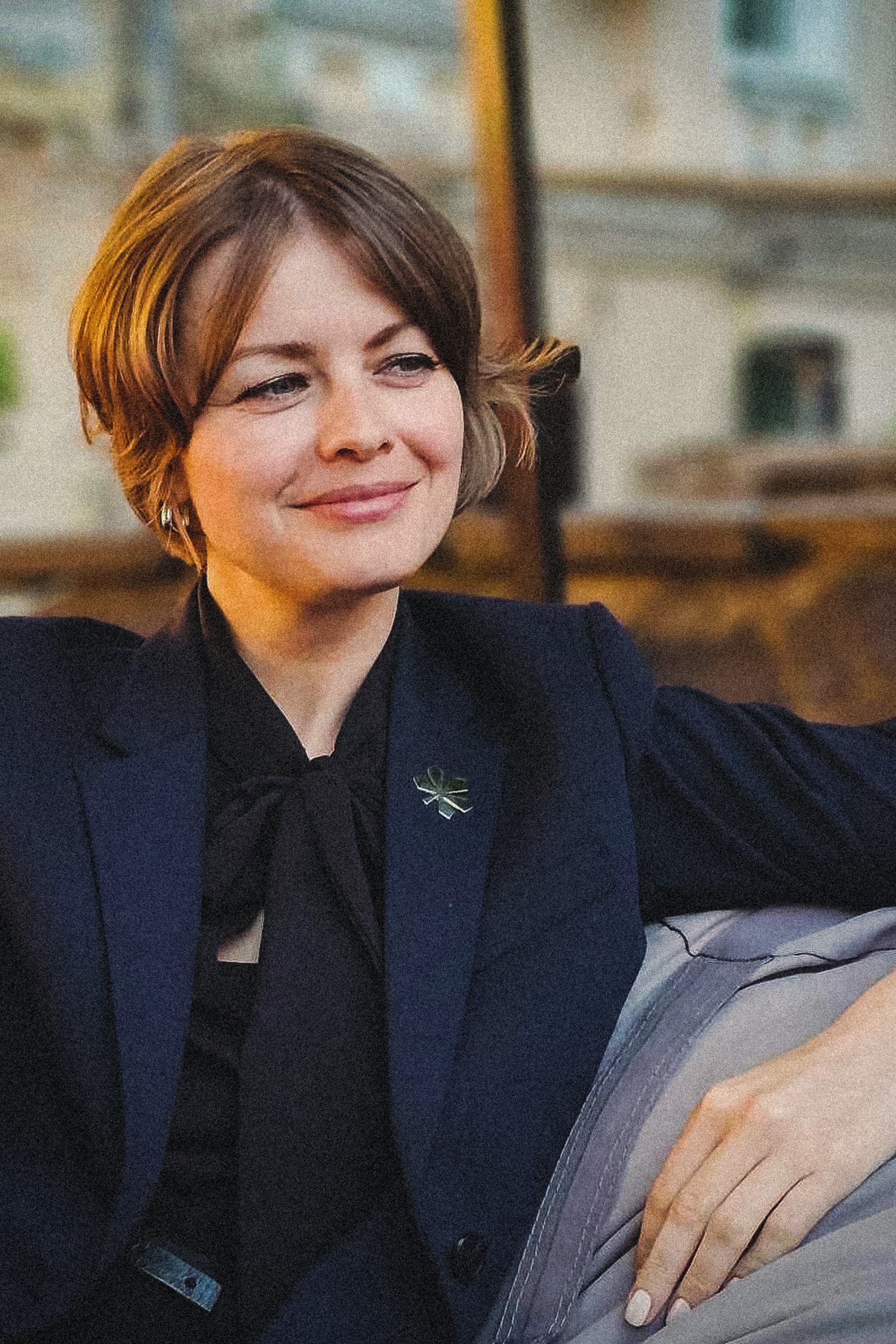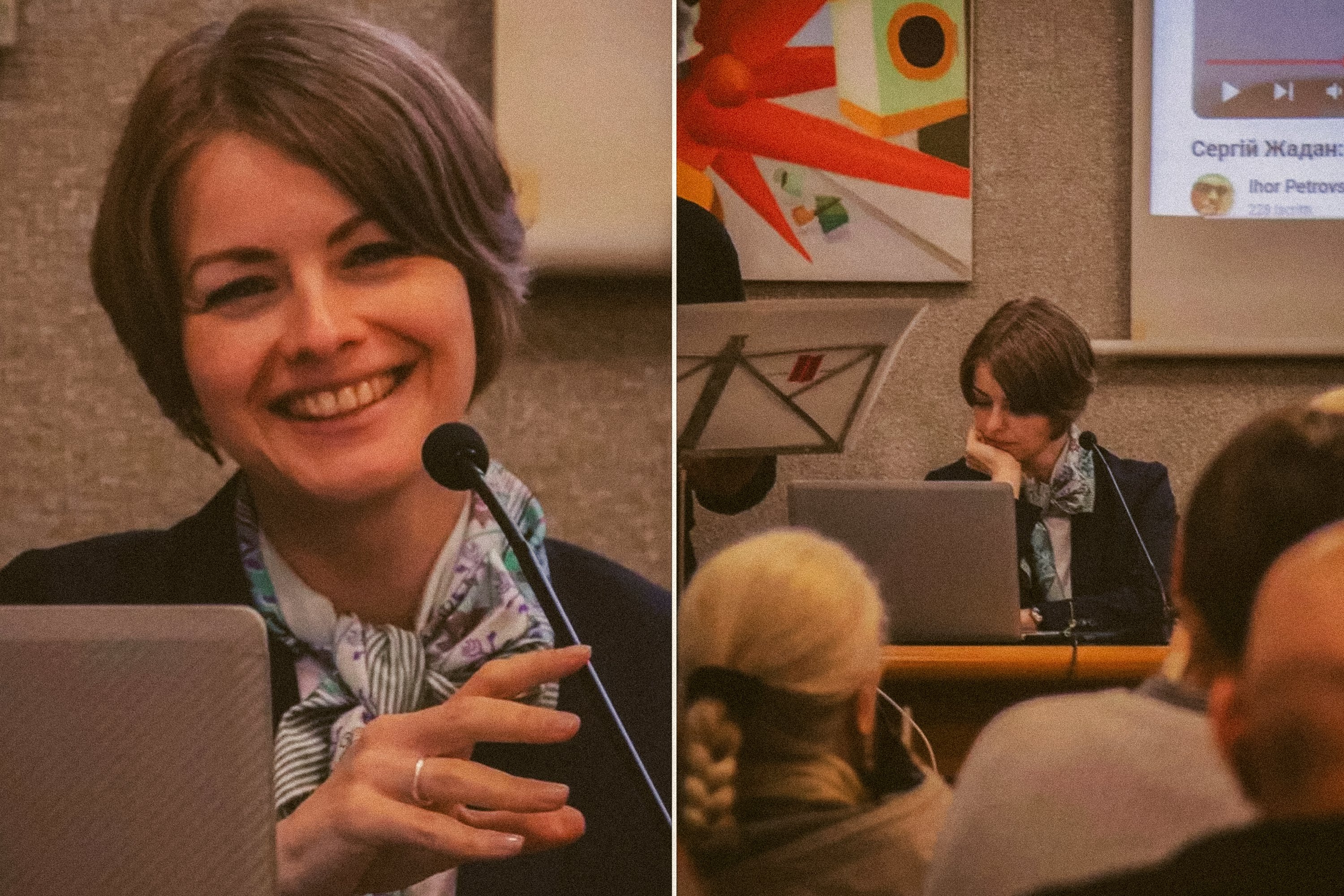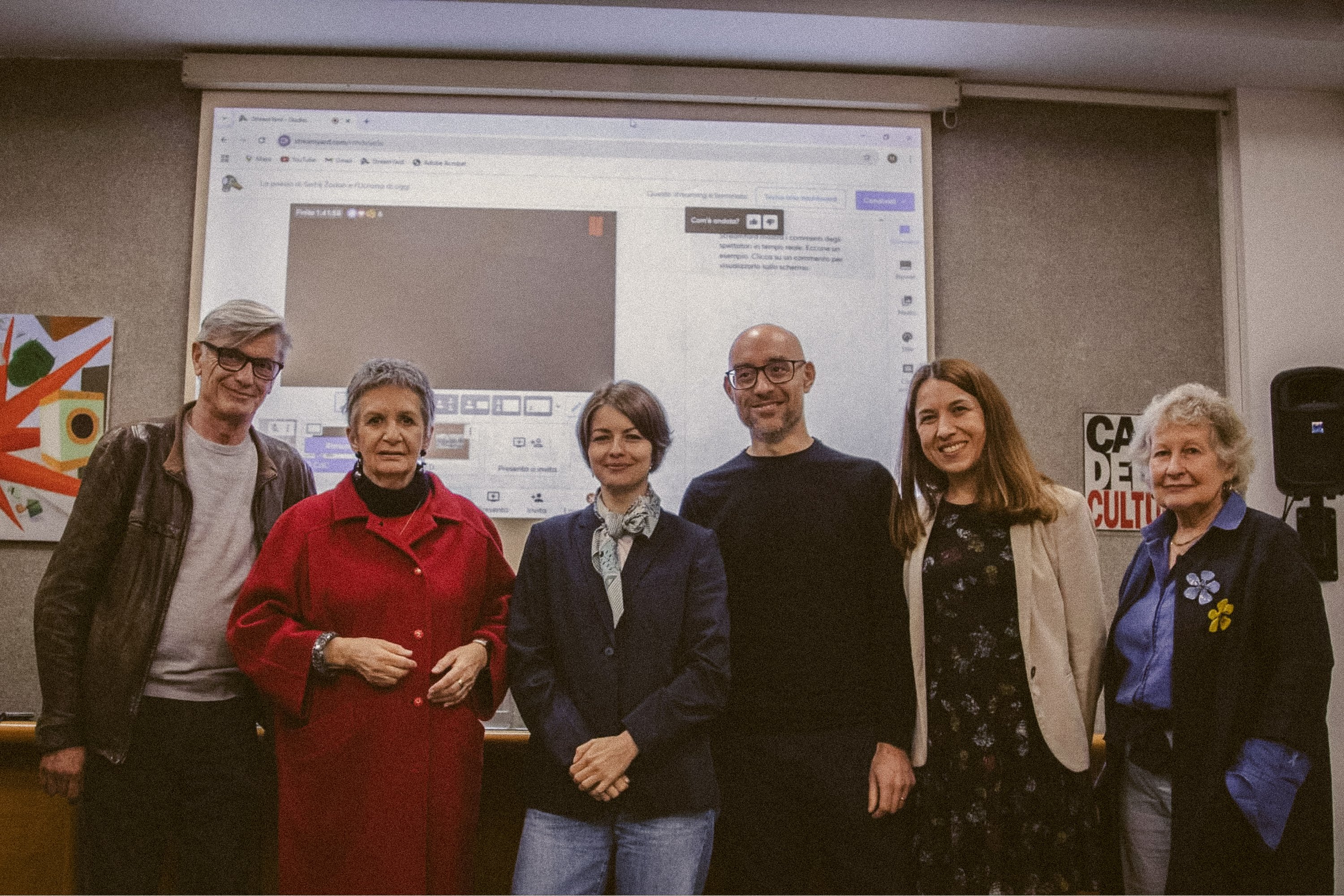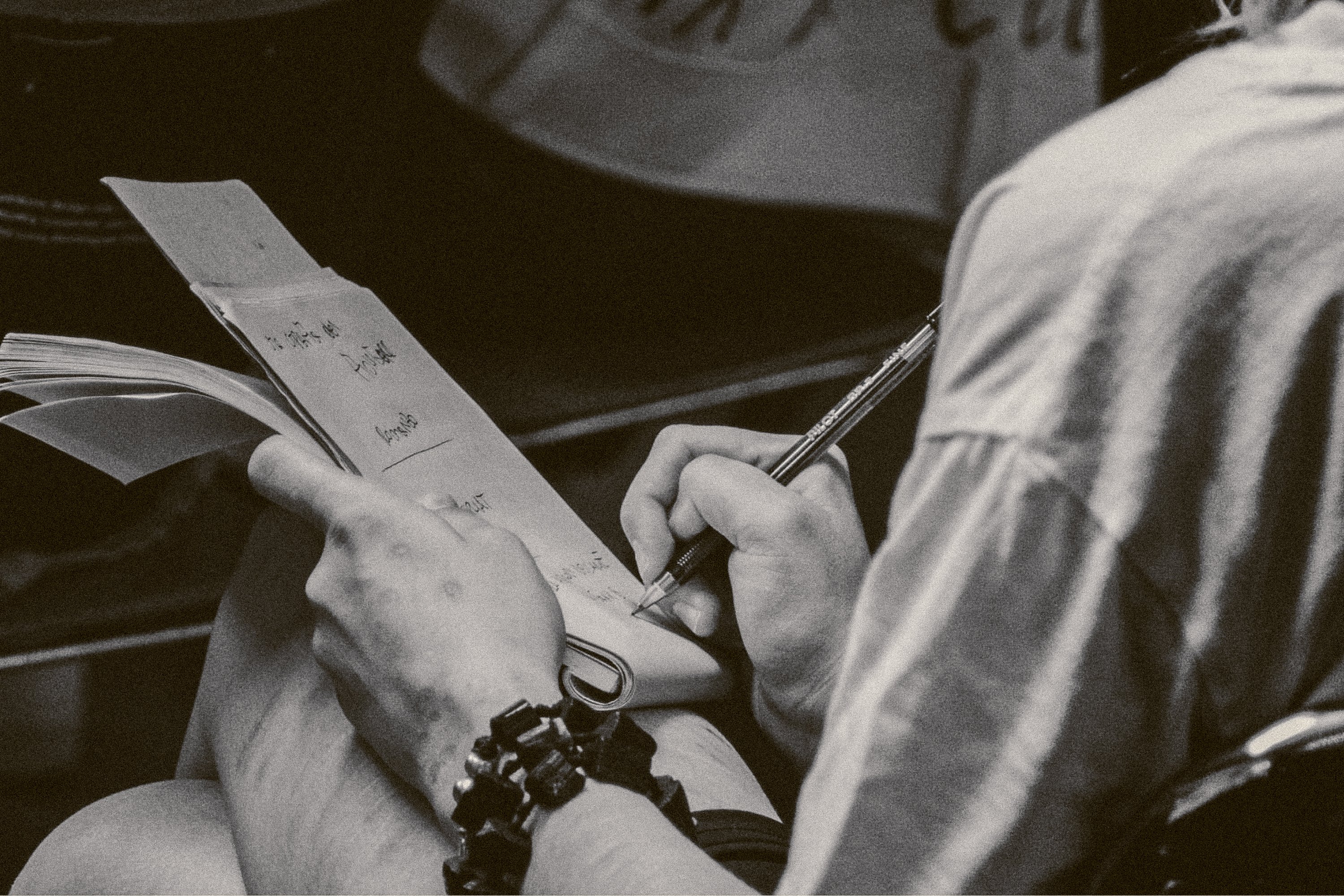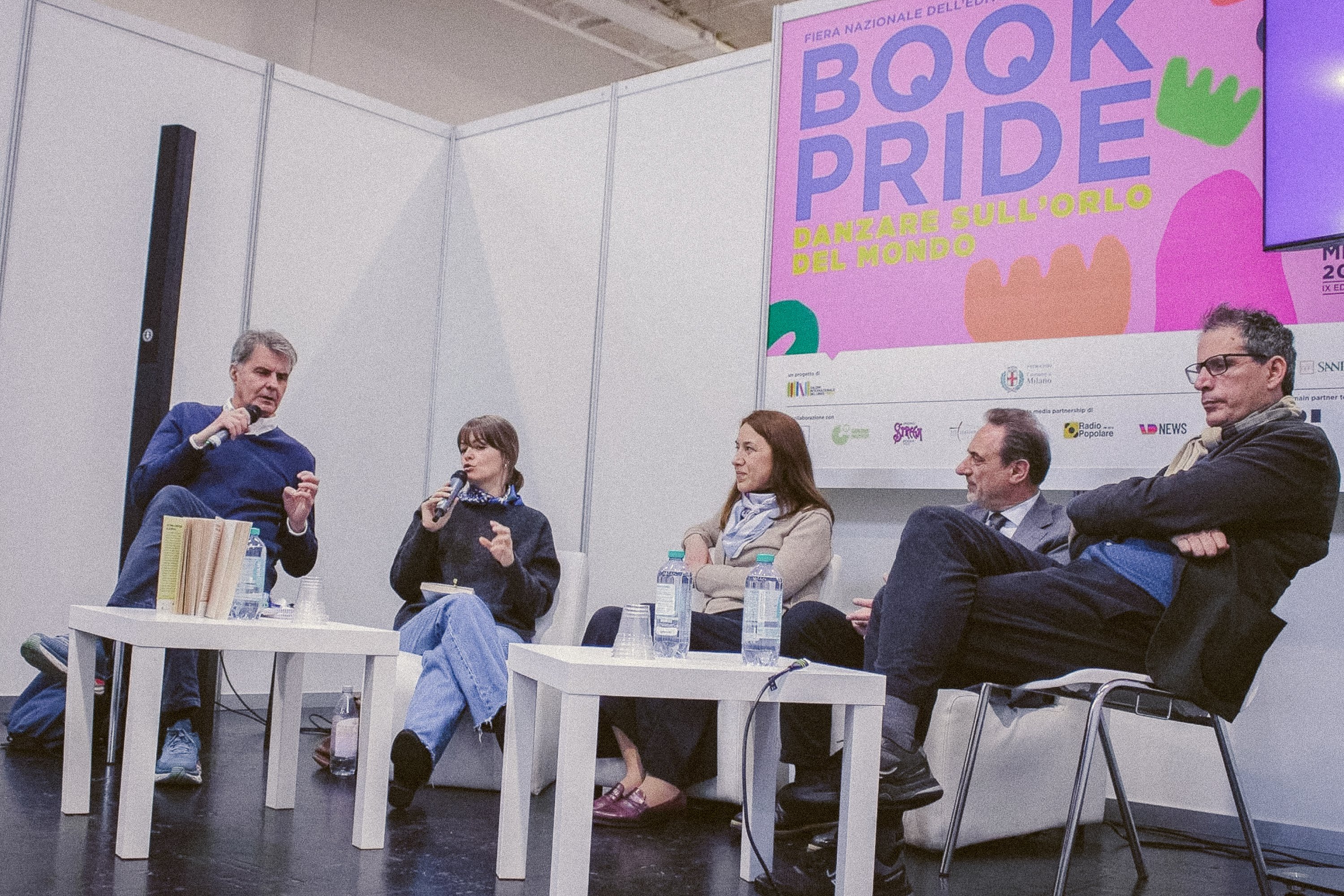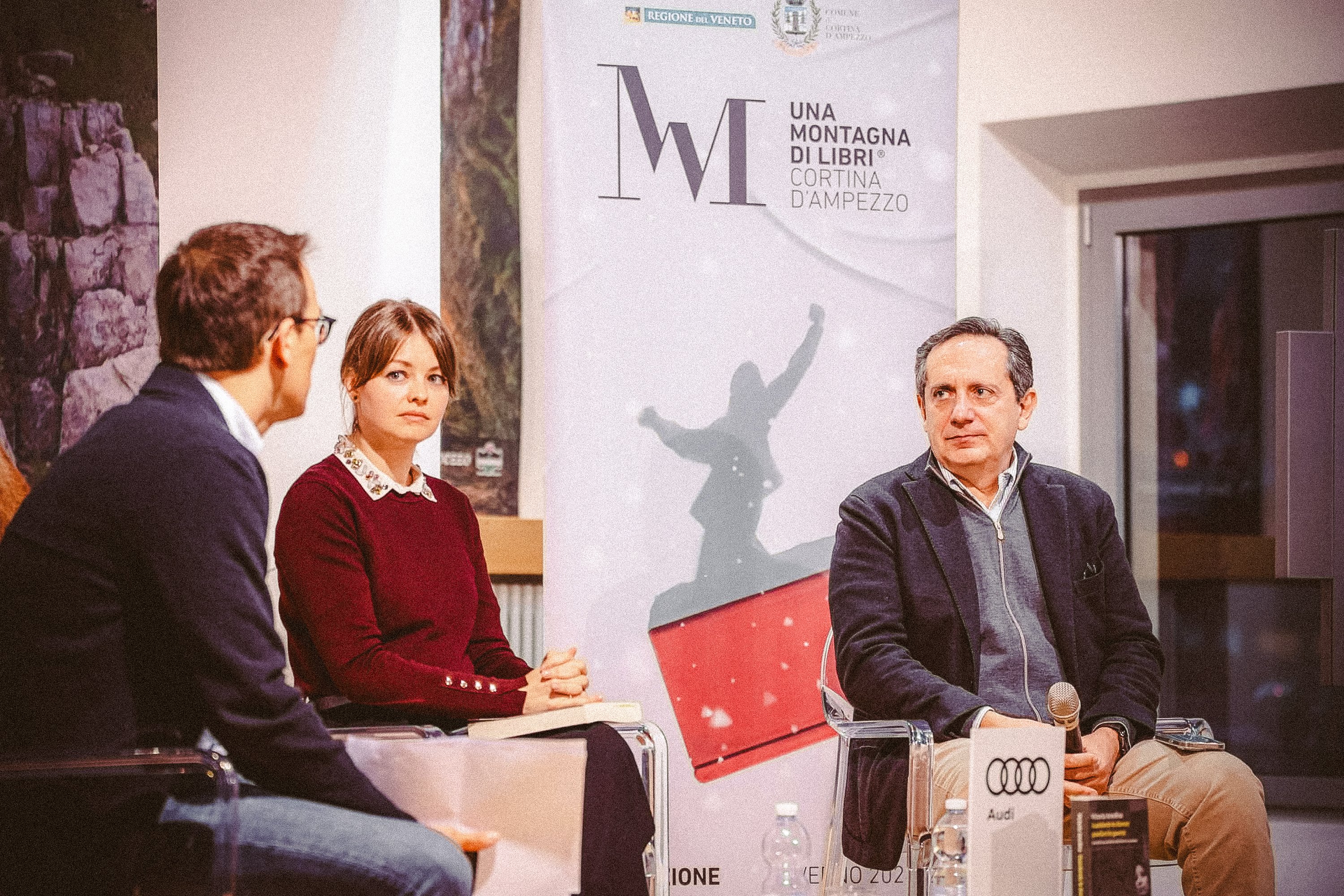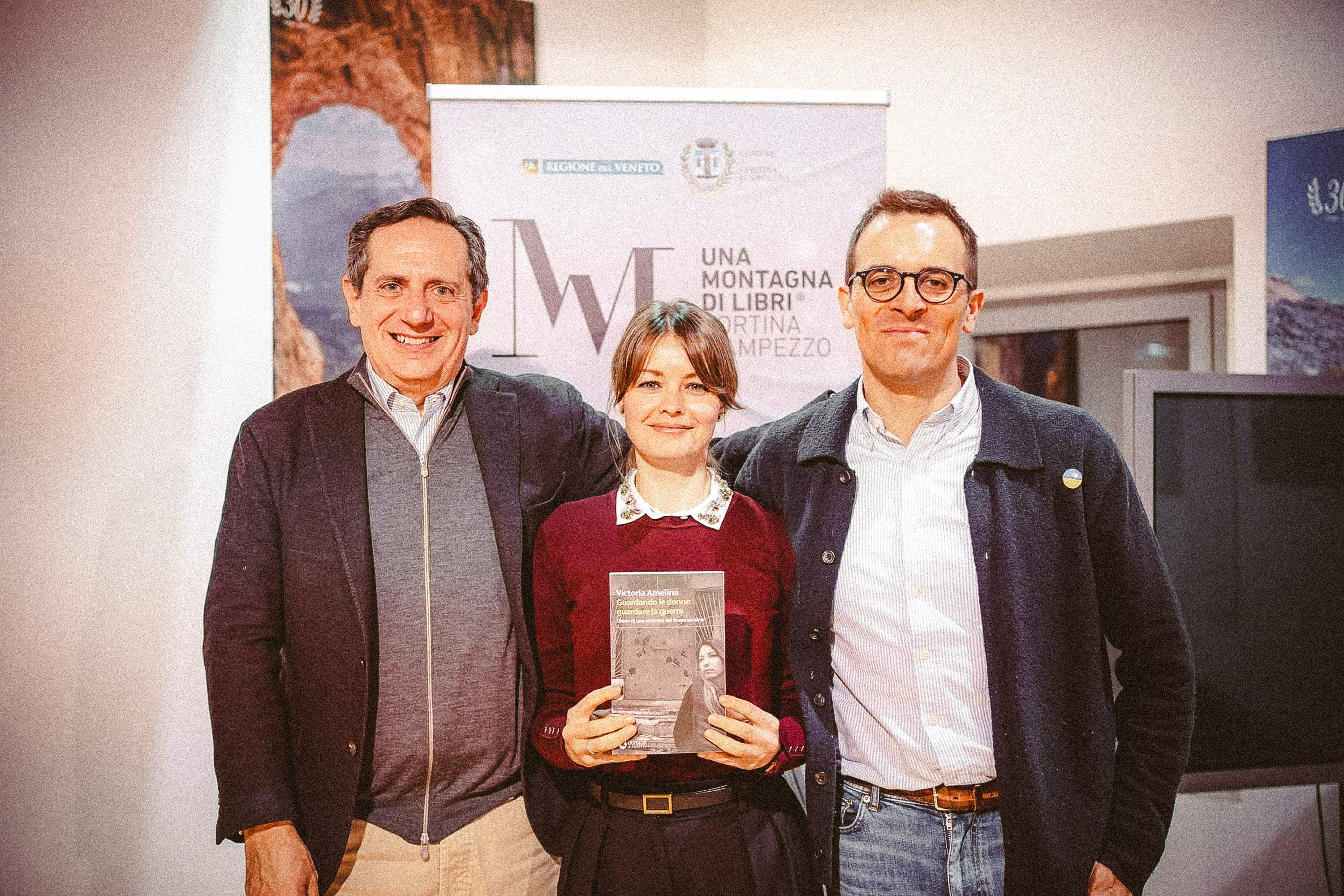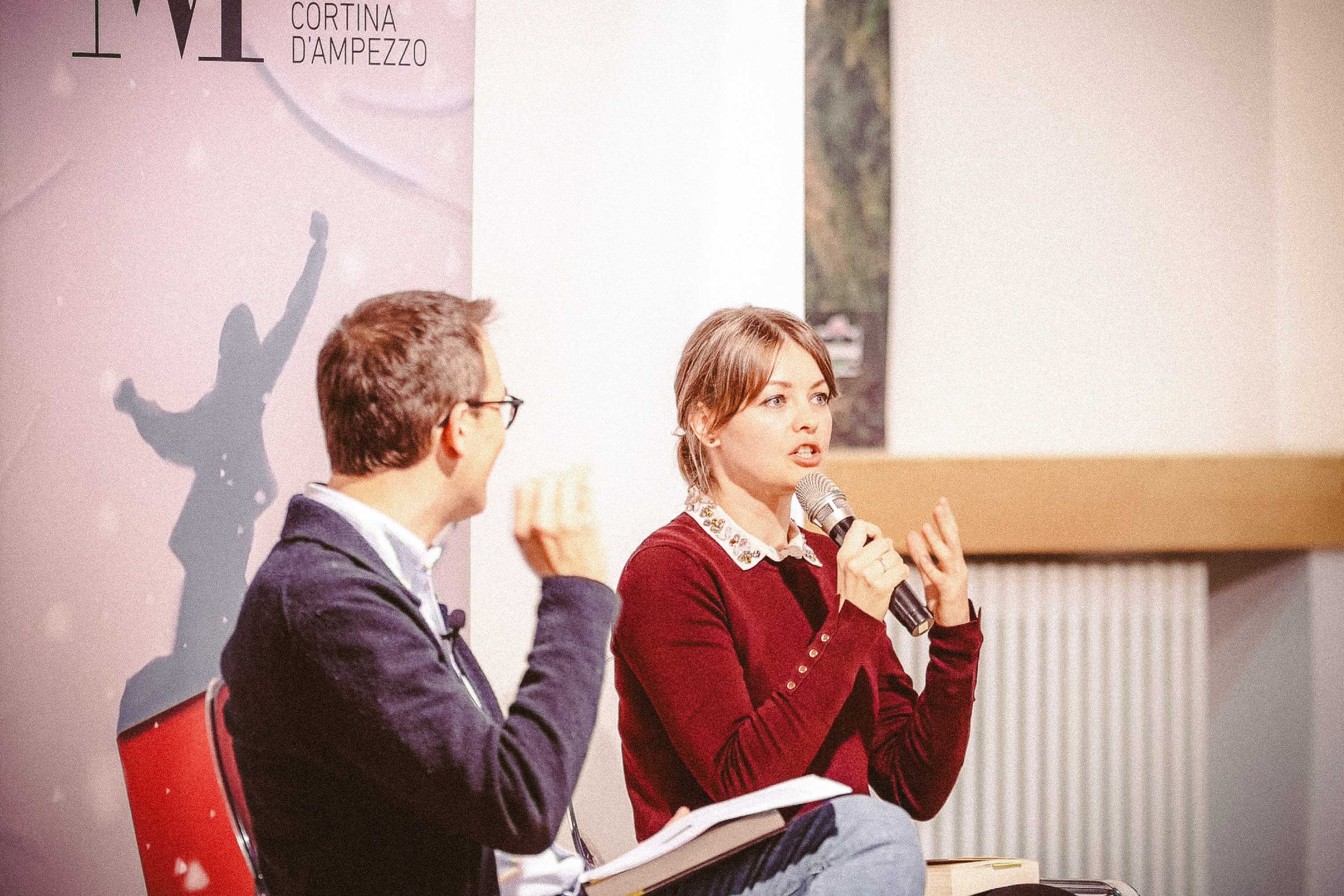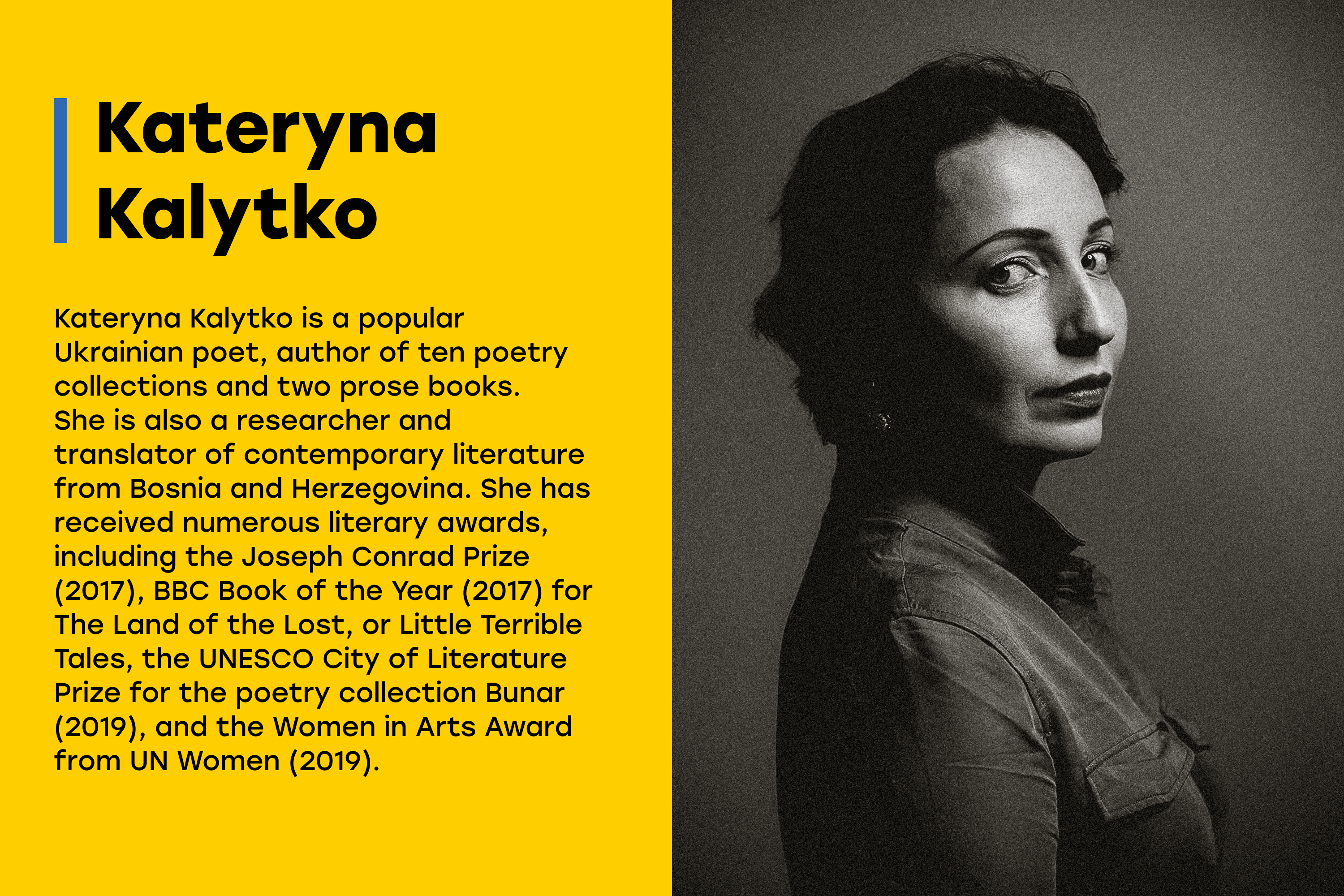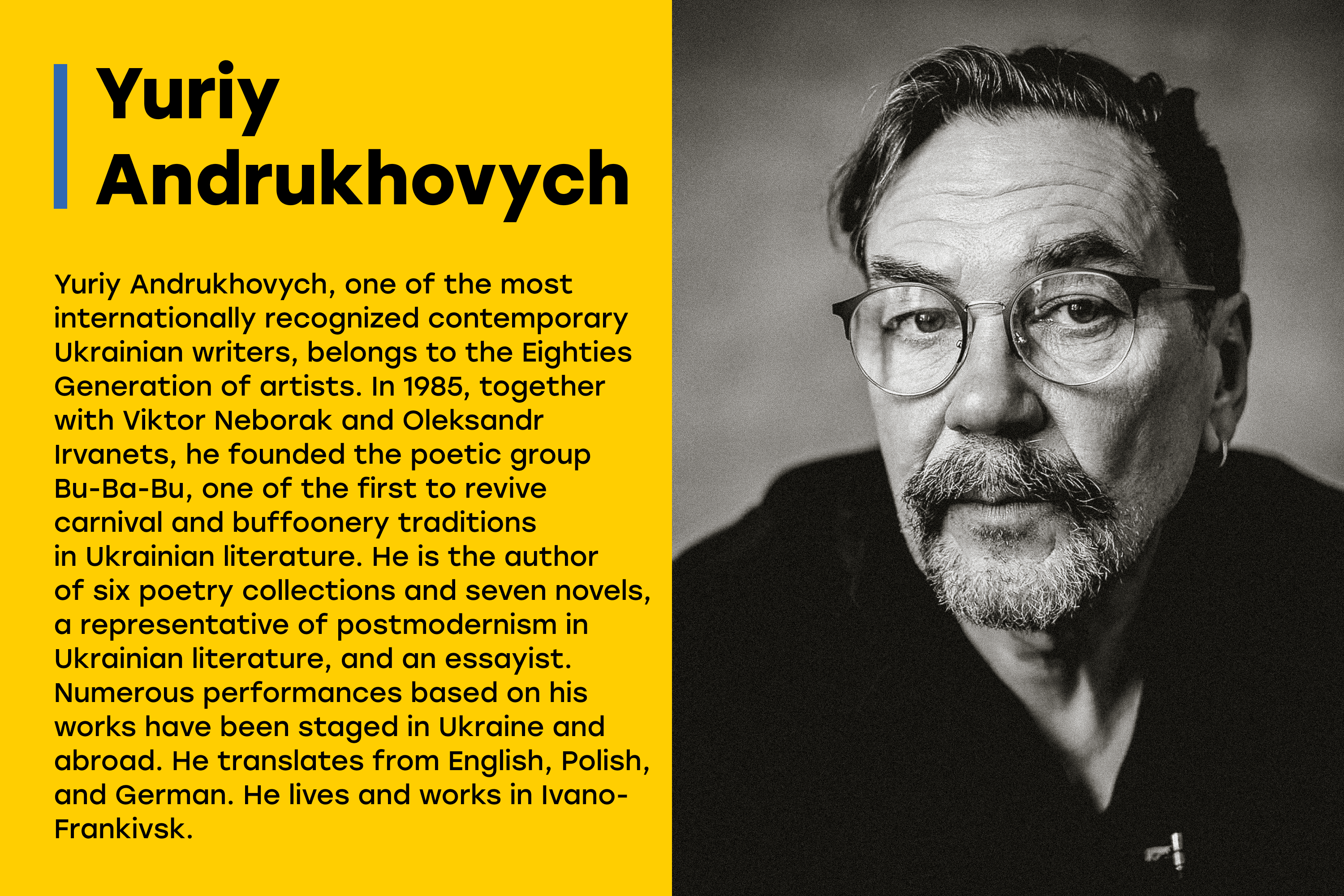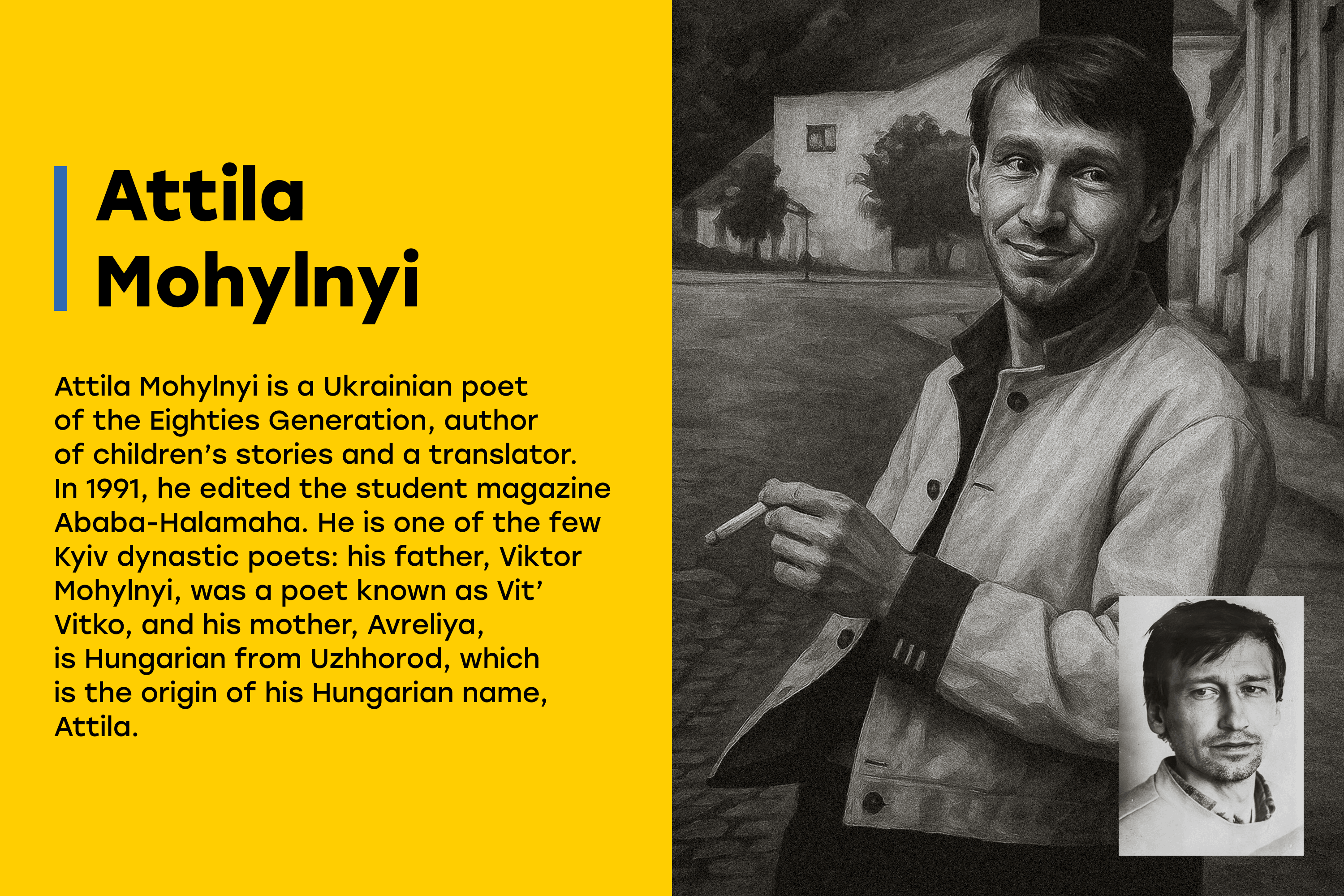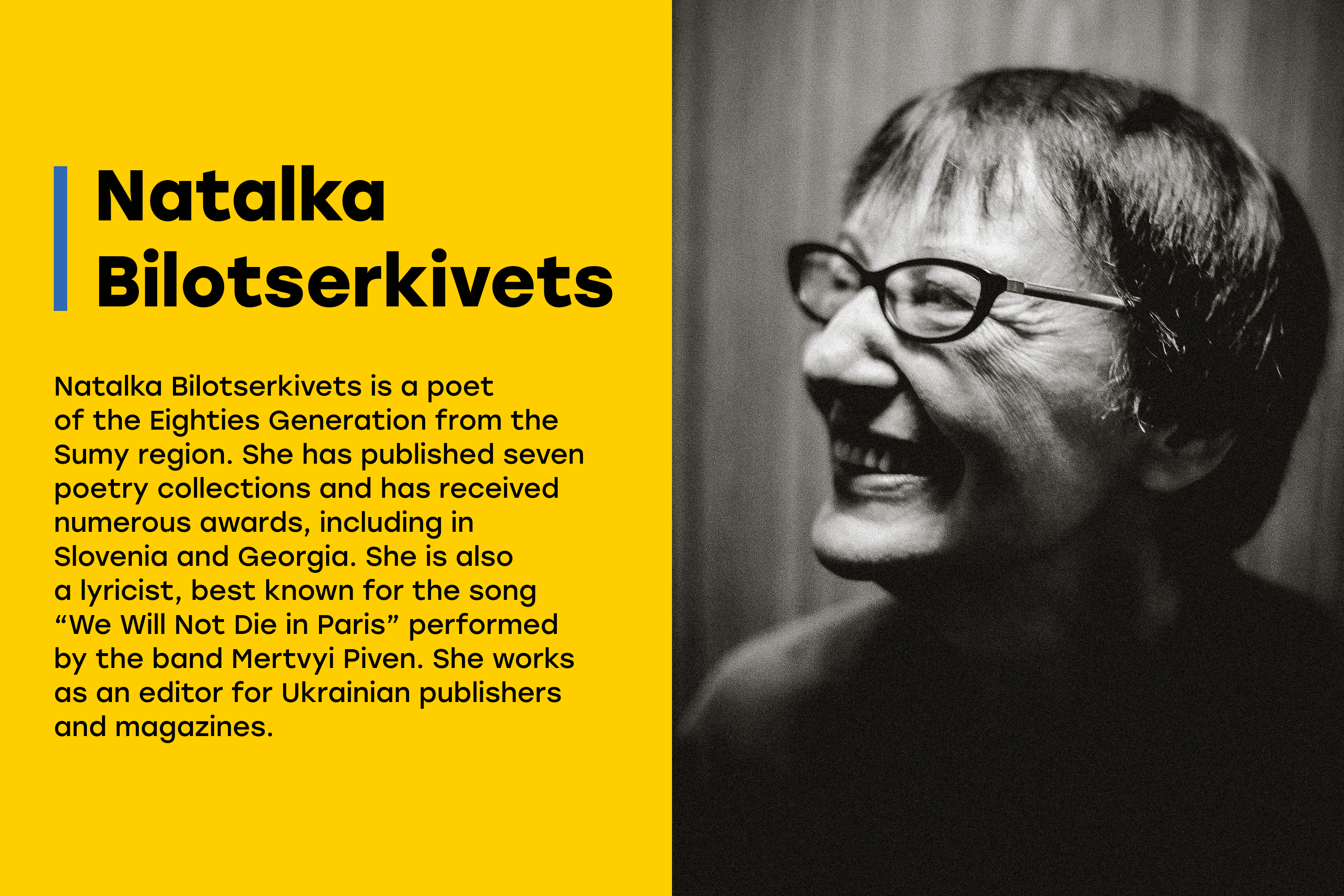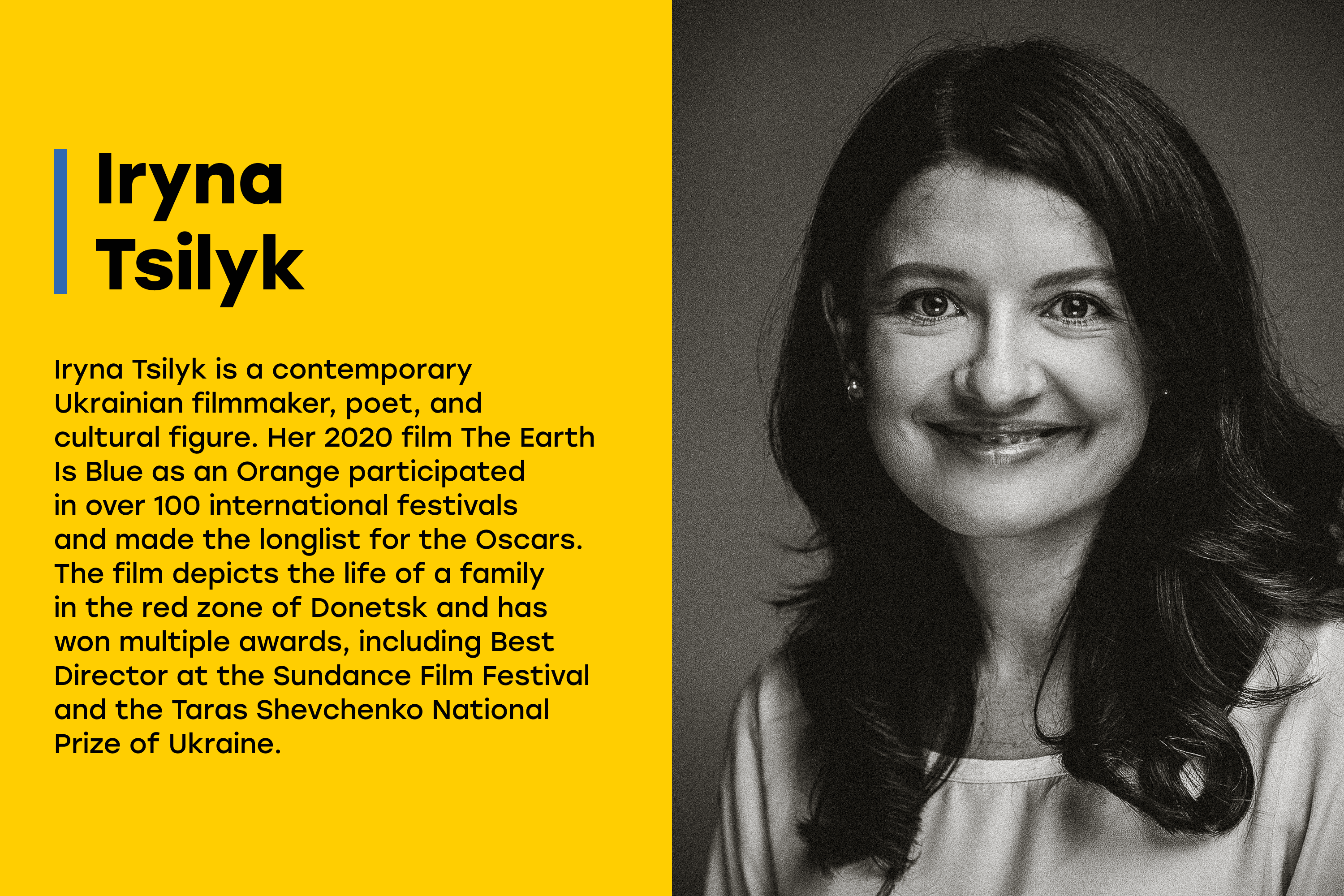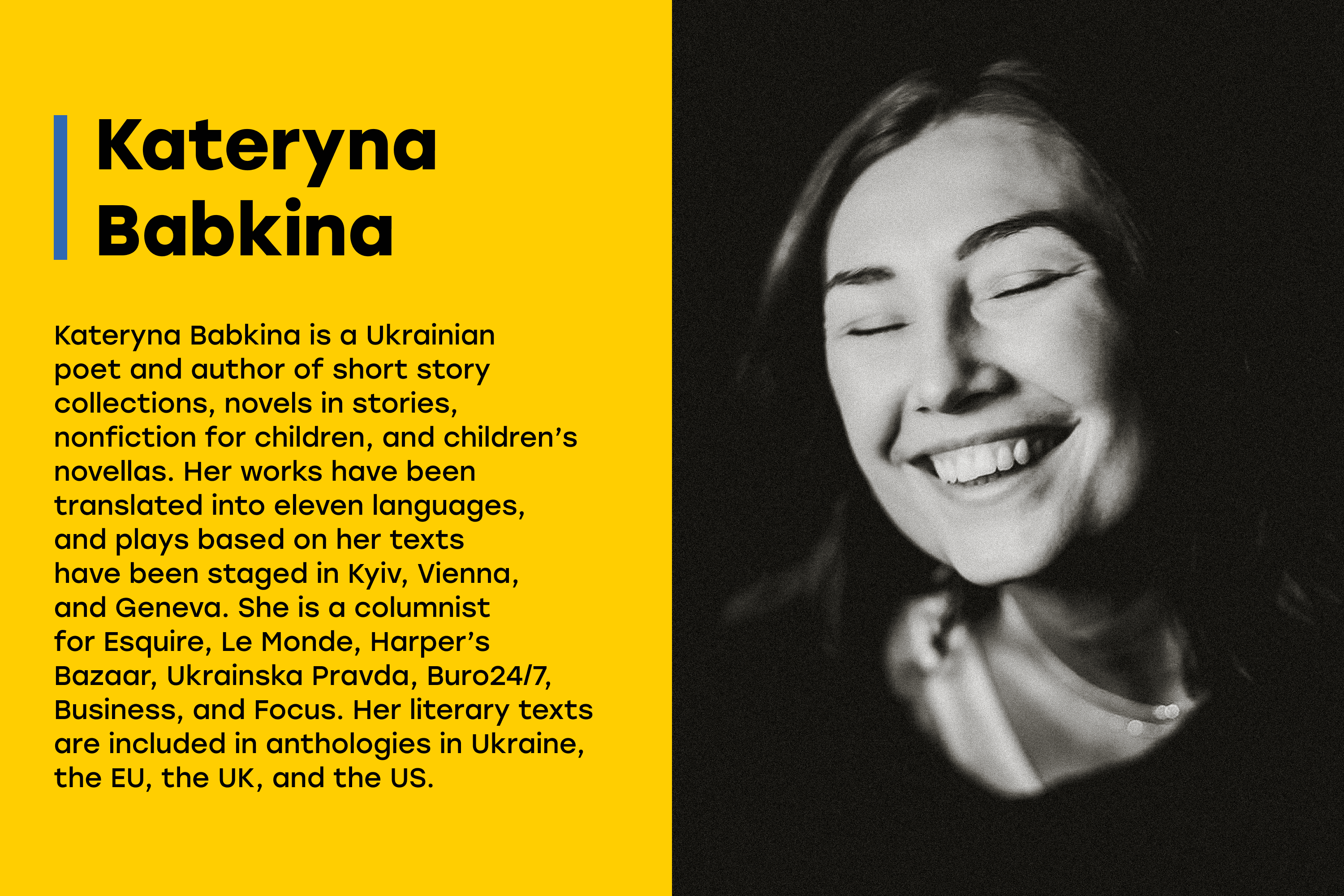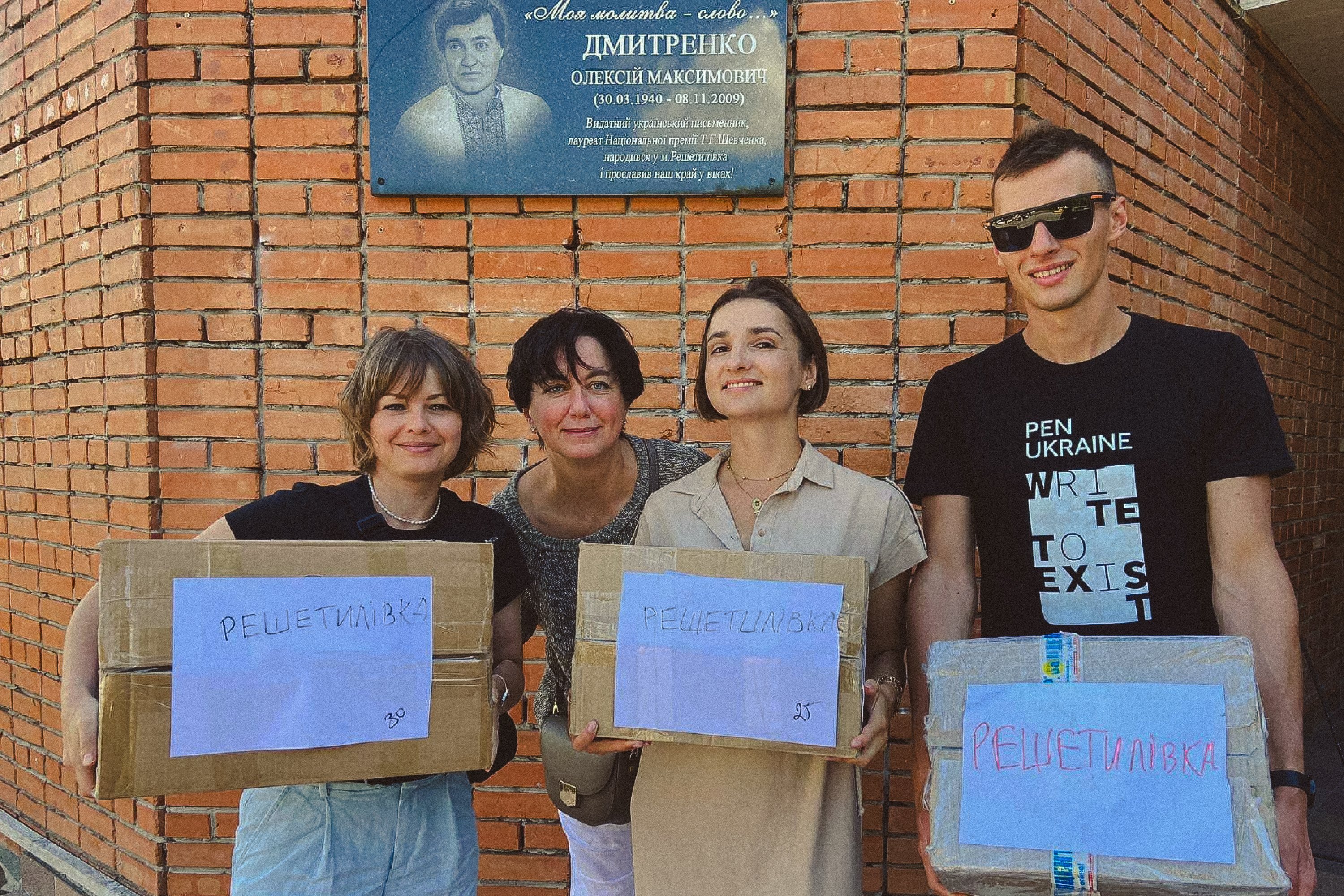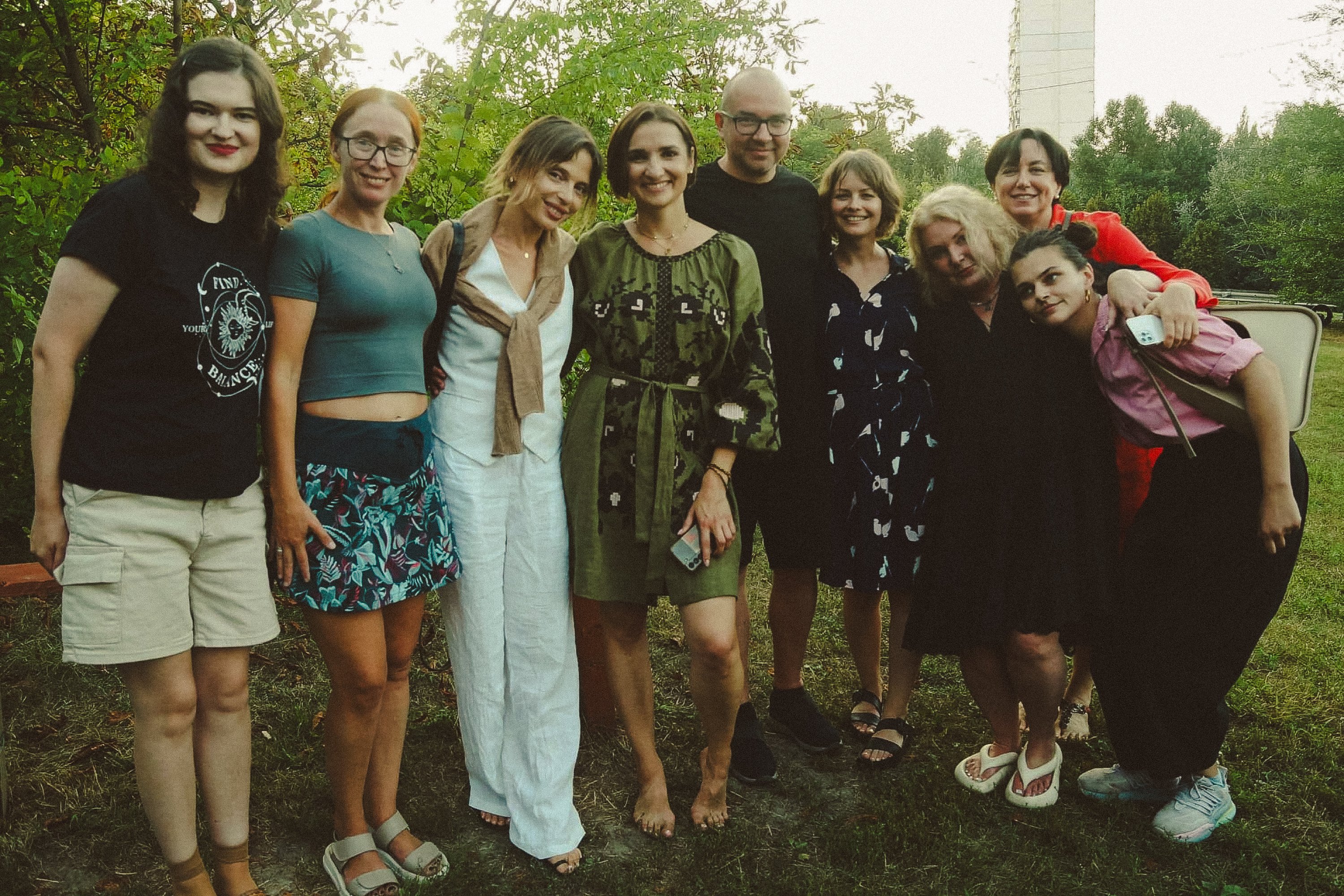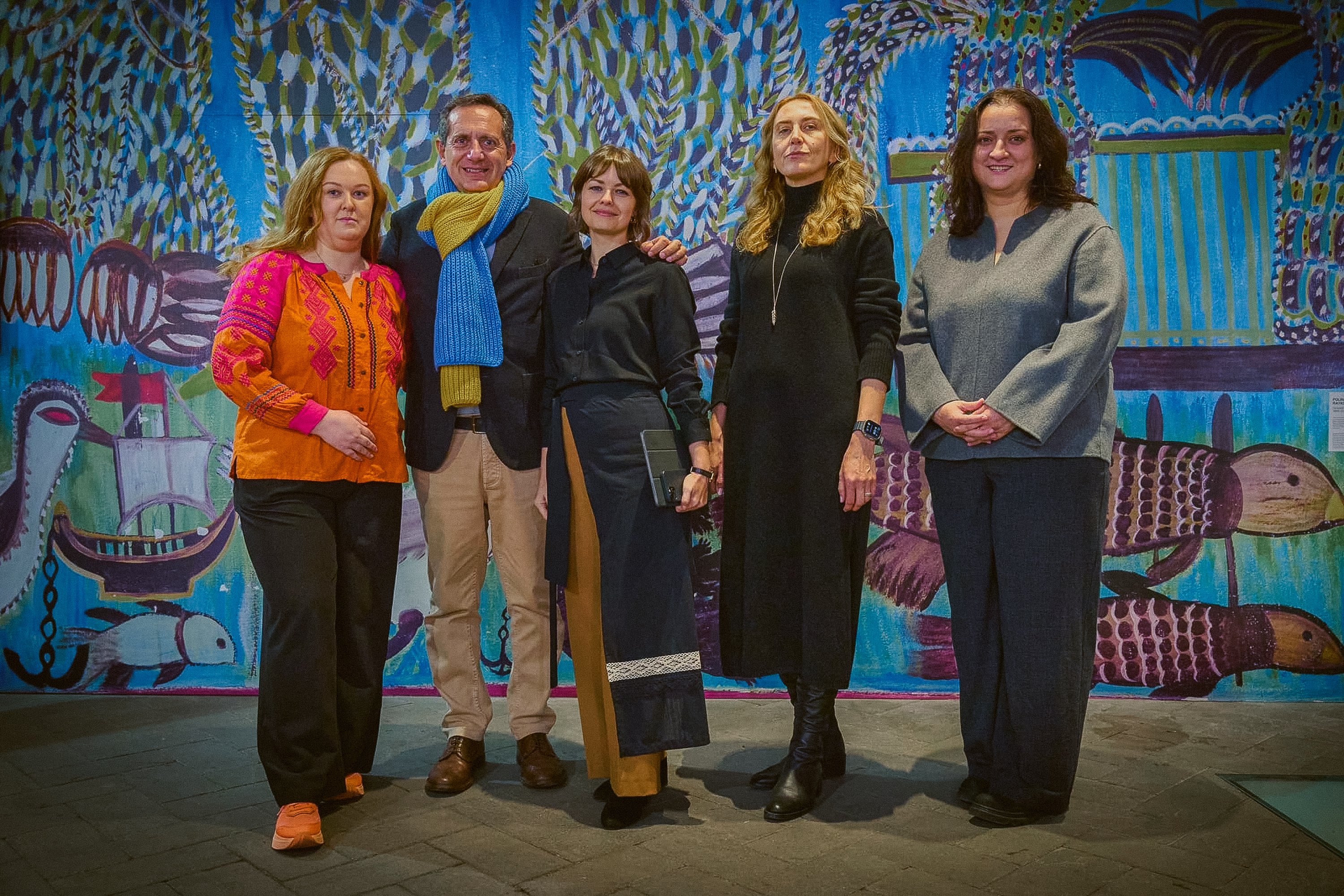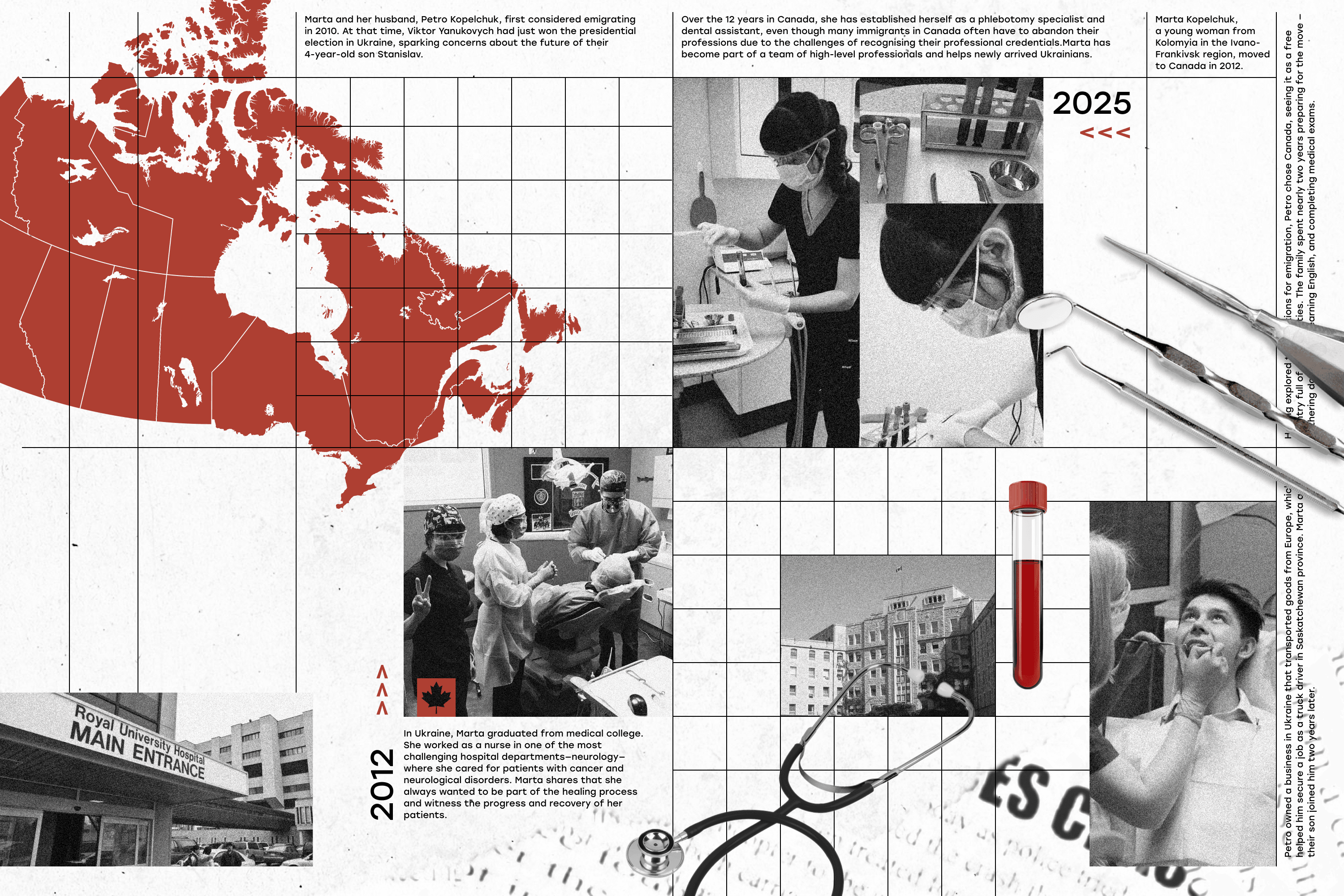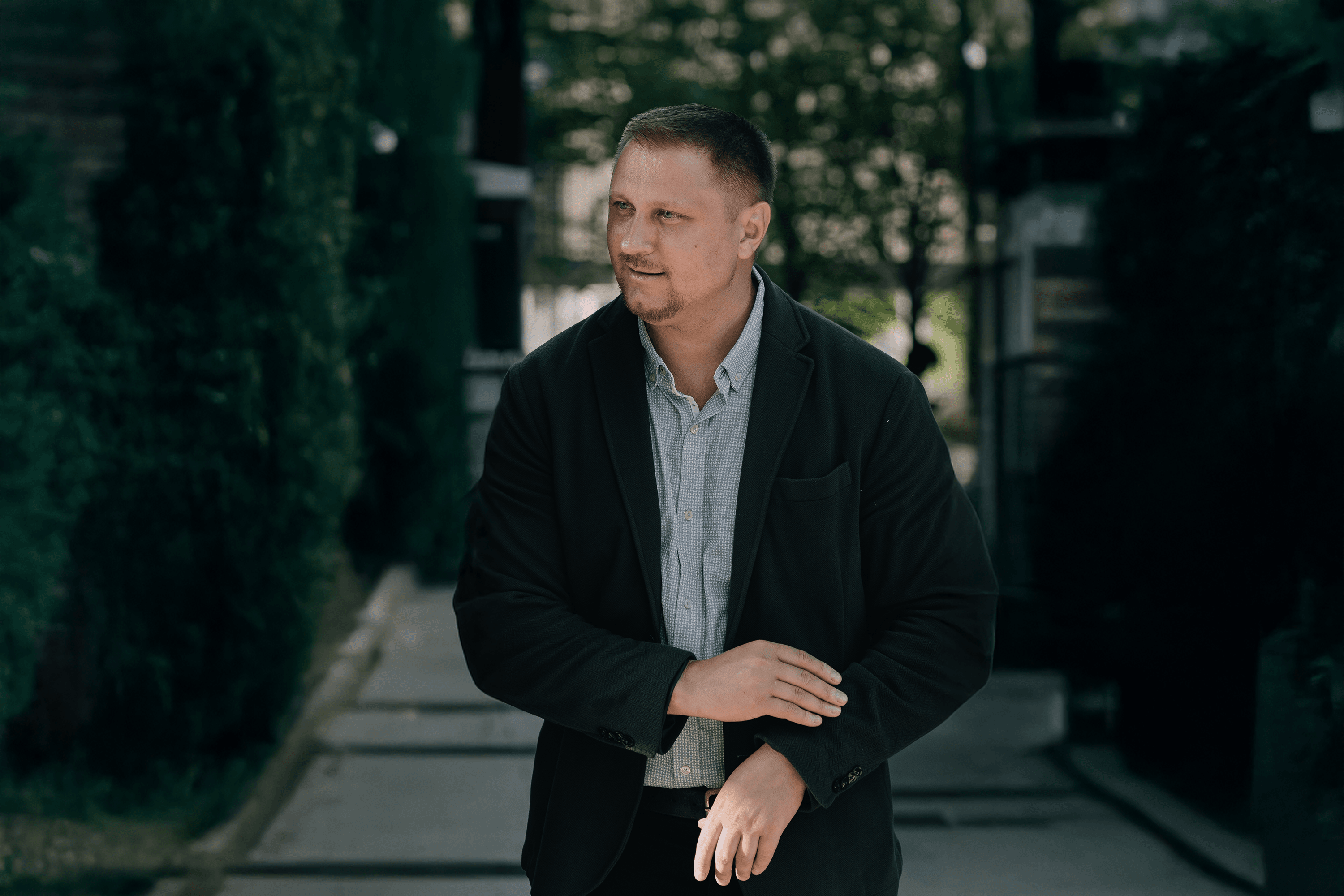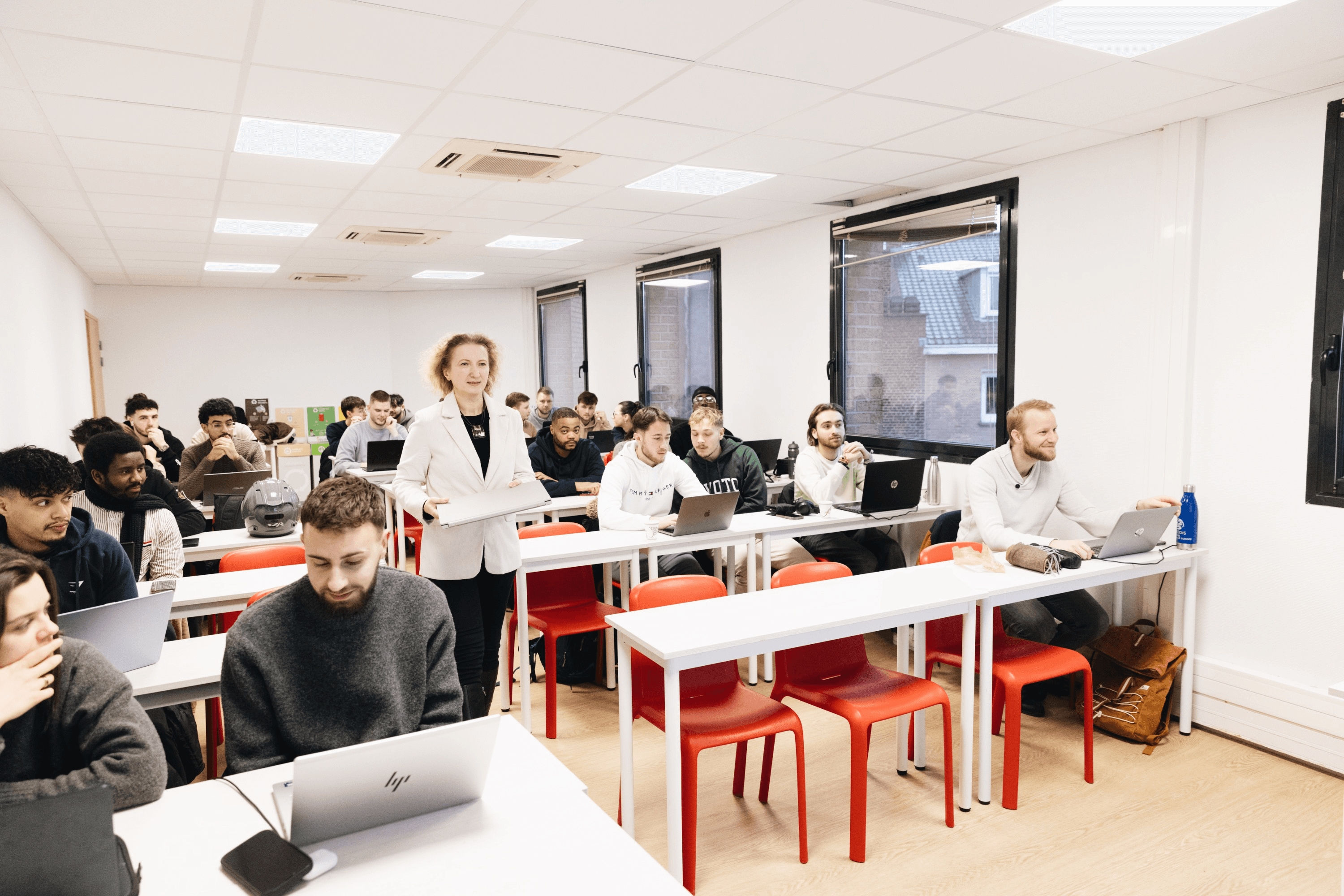Yaryna Grushа’s family comes from the Chornobyl region. Shortly after the disaster, her parents moved to her great-grandmother’s homeland. In the summer of 1986, just a few months later, Yaryna was born in a border village in the Vinnytsia region — where, at the end of the street across the Dniester River, Moldova began. Yaryna says this geography shaped her life.
At the age of nine, she first travelled to Italy through a health program for children affected by Chornobyl. She continued visiting the country every year, gradually mastering the language. After high school, Yaryna enrolled at Taras Shevchenko National University of Kyiv, majoring in Italian philology. She wanted to become a translator, but after graduation she worked little in her field: there was almost no demand for literary translation. Instead, she became an executive producer in Ukrainian film and television, and also worked as a fixer for Italian broadcasters during the Revolution of Dignity.
In 2015, Yaryna married an Italian and moved to Italy. For the first three years, she made a living through oral and technical translation while searching in vain for a permanent position in her field. Since 2018, she has been teaching Ukrainian language and literature at state universities, first in Milan and later in Bologna.
After Russia launched its full-scale invasion of Ukraine, Italy saw its first strong wave of interest in all things Ukrainian. Then Yaryna divorced and worked almost around the clock on articles and translations: together with her colleague, Slavist Alessandro Achilli, created the first anthology of Ukrainian poetry for the Italian publisher Mondadori and for Rizzoli, she produced a literary guide to Kyiv that, which for the first time featured some Ukrainian classics in Italian.
Journalist Mila Shevchuk of YBBP met with Yaryna Grushа in Milan. They spoke about her career, the image of Ukrainians, and Ukraine’s rebranding in Italy.
1. How to Teach at Universities in Italy
Did you want to move to Italy?
I never considered moving, even when I graduated from university in 2008. At the time, during the economic crisis, it was impossible to make a living through translation, so I worked in film and television, and I really enjoyed that field. In 2015, I married an Italian. I moved at the mature age of 29, but Italy turned out to be different from what I had imagined, especially when it came to work. I had no connections, and here they matter a great deal. Even the simplest things didn’t work, like writing a professional email and getting a reply. I was looking for work at official cultural foundations, but no one replied to my emails. My Ukrainian diploma didn’t qualify me for other positions.
How did you come to teach in Milan and Bologna — cities where education is considered among the most prestigious?
I’m allowed to teach Ukrainian without having to validate my diploma. After three years in Italy, I had built connections in the Italian field of Ukrainian studies. First was Milan: in 2018, I learned that a position had opened at the University of Milan, and I won the competition. In Bologna, the course started in 2022.
Until 2022, there were no demand for Ukrainian language and literature. With the Italian Association for Ukrainian Studies, we organized events, but they were just a drop in the ocean. Only three or four books had been translated into Italian to teach Ukrainian literature. Russia’s full-scale invasion of Ukraine changed everything: at the initiative of Slavic studies professors, Italian universities launched new Ukrainian courses in Turin and Bologna, and the program in Padua was reinstated. Local publishers suddenly became interested in Ukrainian literature. It was a kind of hype, but Italian society was genuinely asking: What is Ukraine?
In 2022, I was working 12 hours a day — translating, giving television commentary, writing articles. It was a tragic situation: suddenly everyone urgently needed experts on Ukraine, but no one had invested in developing them before. This is a problem for both Italy and Ukraine. The Ukrainian Institute, meant to represent Ukraine internationally and build its image, was only created in 2017. A year earlier, the Ukrainian Book Institute had been founded to support translations and promote Ukrainian literature abroad. But you can’t build an entire industry in just five years. France, Germany, and the UK were better prepared, but in Italy, Spain, and smaller European countries, the situation for Ukrainian culture remains difficult.
What was your first impression of Italy in 2015?
I didn’t expect the society to be so conservative. I was used to Ukrainian dynamism, service, and social media. In Ukraine, the revolution started in social media, and everyone was buying and ordering things online. In Italy in 2015, most people didn’t even know what social media was, and to top up a mobile phone, you still had to buy a card and scratch it with a coin. I was struck by how unprepared Italy was for modern challenges.
On the other hand, Italy charmed me with a sense of stability that Ukraine has historically lacked — first the collapse of the Soviet Union, then the difficult 1990s. Here, at 20, it’s normal to think about retirement. I was pleasantly surprised by the confidence people had in the future. At the same time, Italians often see little reason to push themselves because everything is already going well for them.
How complex is the bureaucracy in Italy for teaching and translating?
I have an Italian sole proprietorship, Partita IVA, covering three activities: teaching, translating, and creating literary works. It’s more advantageous for me to work as a sole proprietor than as an employee: you pay your own taxes, but in the end, you earn more. Every year, I file a tax return, and I have an accountant. I pay her 220 euros per quarter. She checks the contracts I sign, calculates taxes, and reviews the invoices I issue to clients.
Milan is now your main city in Italy: home, university work, social circle. How did you end up in Bologna and manage life between two cities?
In 2022, a course opened in Bologna, and I was invited to teach there, though in 2025 I ended my collaboration with them. It was physically exhausting: three days teaching in Milan, and two in Bologna, traveling 400 km back and forth each day, and Italian trains are often late. Students choose the Ukrainian course themselves — I don’t promote it; that’s the university’s responsibility. Auditors can attend lectures, but they are not permitted to participate actively because they aren’t paying for the course. In Bologna, many attendees didn’t know any Slavic languages; they just wanted to understand what Ukraine is because they had heard about the war. In Milan, on the other hand, attendees are mostly students who are already studying Russian and want to add another Slavic language. I dream of opening a separate Department of Ukrainian Language and Literature in Milan. Right now, it exists only in Rome, but that would require both funding from the university and a government support program from Ukraine.
Which Ukrainian works do you teach to students? What is available in Italian translation?
Now there is a decent selection, but in 2018 I could barely scrape together enough for six lectures: only [Taras] Shevchenko, The Yellow Prince by [Vasyl] Barka, and [Serhiy] Zhadan. This is a year-long course — 20 lectures on language and 10 on literature. I start the program with an overview lecture on the history of Ukrainian literature. Next are Shevchenko, [Mykhailo] Kotsiubynsky, and this year [Ivan] Nechuy-Levytsky has been added. I’m very happy that Alessandro Achilli completed his translation of The Kaidash Family; it was published and quickly became popular with the students. Next is Lesya Ukrainka, followed by a lecture on the Ukrainian 1920s, based on a comparison of the novels The City and The Girl with the Teddy Bear. There is also a lecture on the Sixtiers, including [Vasyl] Stus and Lina Kostenko. For poetry, we usually read both the original and the translation. Alessandro is translating Haska Shyyan’s Behind the Back, because there are very few Ukrainian women’s texts available. I haven’t signed the contract yet, but Victoria Amelina’s A House for Dom will be translated and added to the program.
What resonates with students? Which works do they find most relatable?
What connects with them varies from year to year. Some years, Shevchenko is a hit; students are drawn to his life story. Other years, it’s Lesya Ukrainka, and in another year, The Yellow Prince by Barka, about the Holodomor, left a strong impression. Poetry is harder for them to grasp because Italian readers, in general, are not very familiar with it. I test students on how they analyze poetry, and often they don’t really know how to read it, which surprises me.
How does the teaching culture in Italy differ from Ukraine?
People say my approach is like that of American universities because I actively interact with the audience and encourage participation during lectures. Students say this doesn’t happen in Italian universities: they just come, listen, and later take an exam. I notice that during exams they’re often nervous and unsure how to respond. I believe the level of Ukrainian students is much higher than that of Italian students.
2. How to translate Ukrainian into Italian
When did you make your first translation of Ukrainian literature into Italian?
Although my Italian was already at a good level, I needed to improve it further before I could start translating. I made my first translation in 2019 together with Giovanna Brogi: a short story by Serhiy Zhadan for the Swiss literary magazine Viceversa. Then in 2022, it became non-stop: in March, my colleague Alessandro Achilli received a request from the publisher Mondadori to create an anthology of Ukrainian poetry and invited me to participate. At the same time, I created a literary guide to Kyiv and began translating many Ukrainian essays and articles. Until then, Ukrainian literature had been translated here by only three specialists: Giovanna Brogi, Alessandro Achilli, and Lorenzo Pompeo.
How long did you work on the anthology of Ukrainian poetry?
We had very little time: we started at the beginning of April 2022, and by the end of June it was already going to print. The book was scheduled for release in September 2022. The anthology contains 88 poems. We divided the poetry into six sections and wrote a preface for each to provide context. We decided to start with Vasyl Stus, since Alessandro Achilli had defended a dissertation on him and had translated much of his work. The collection includes the Kyiv School, the Eighties, the 1990s, the turn of the 2000s, and works after 2014. The book is bilingual, with the original Ukrainian and Italian translations.

At first, we divided the authors according to which ones we felt closest to: Alessandro took Iya Kiva, Katya Kalytko, and the more complex authors like Yuriy Andrukhovych. I took Attila Mohylnyi, because I really love his work, and Natalka Bilotserkivets from the Eighties; among contemporary authors, I translated the poetry of Iryna Tsilyk and Katya Babkina. This was my first experience translating poetry, and I consider Alessandro a great teacher. I didn’t know I could do it until I started, and it ended up being one of the best experiences I’ve ever had.
Translating poetry is primarily about rhythm. I listen to Italian bards, which helps a lot: Lucio Battisti, Lucio Dalla, and Fabrizio De André, because they do sung poetry; among contemporary artists, Dario Brunori. Alessandro and I have a rule: we read our translations aloud to each other to hear the rhythm. He teaches in Sardinia, so we would meet before he got on the train and read poems together at the station. Even now, we’re working together on a collection of Iryna Shuvalova’s poetry, which will be published by Interlinea.
Do Italian publishers approach you, or do you propose texts yourself?
To publish Iryna Shuvalova, Alessandro reached out to the publisher, but they were happy to proceed because they had received a grant from the Ukrainian translation program Translatorium. The rest are requests from local publishers. I can’t release more than two translations per year, and so far requests continue to come in.

I proposed it only once, to the publishing house Linkiesta Books. At that time, I was working in the news editorial office of the Linkiesta media group. I offered to translate Kateryna Zarembo’s The East of the Ukrainian Sun. This book explains a lot about eastern Ukraine and was missing from the Italian market, where the dominant narrative has been about the Russian Donbas. Some politicians still claim that what happened in Donbas is similar to Alto Adige, a German-speaking region where Italian speakers oppressed the German-speaking population. That’s why terrorism arose there: the German-speaking population was demanding fair treatment. Russia sold Italy the myth that Ukrainians similarly mistreated Russian speakers and that Donbas needed autonomy through bilingualism. Zarembo shows that bilingualism there didn’t exist until the late 19th century, and that more than 80% of the population spoke Ukrainian as their native language. Over the next 100 years, Russia enforced Russification in Donbas. Italians don’t know this, and the book explains it.
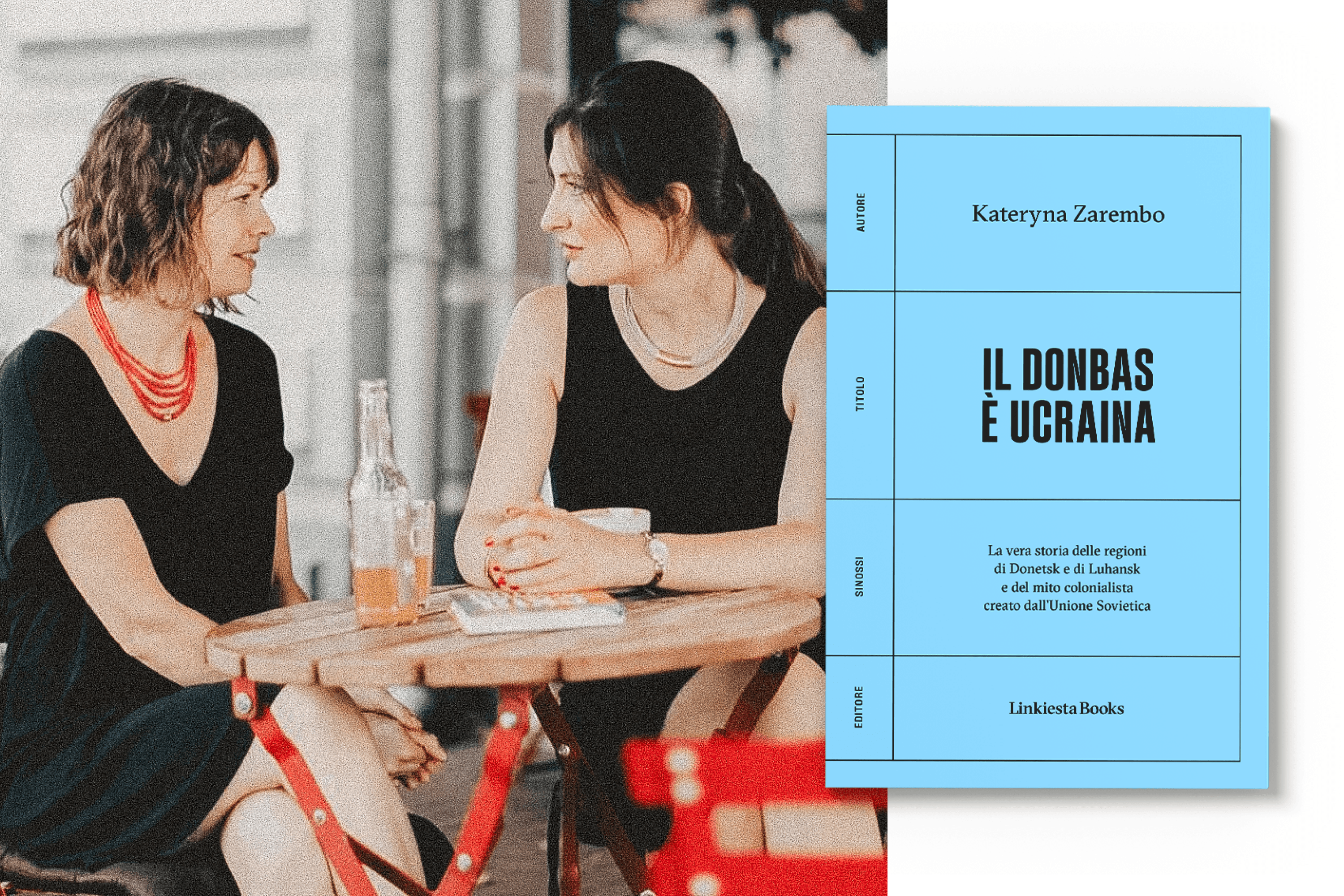
Maybe that’s why there are still sympathies toward Russia in Italy — because one country with imperial ambitions can understand the imperial ambitions of another?
Absolutely. And secondly, Italians are also used to shifting responsibility onto others. They don’t understand Ukrainians who resist and defend their land. It’s easier for them to relate to Russians, who are afraid to take to the streets, because protesting something so powerful is frightening. After World War II, Italy didn’t do the kind of self-reflection that Germany did. Italian soldiers went to Ukraine during the war alongside Germans and Hungarians to conquer us, but this was presented as if the Italian soldiers were victims — they were sent to fight in First World War equipmentand froze to death in the Ukrainian steppes. They were invaders, but this is never mentioned. This reflects a mentality of not recognizing one’s own power and agency: that you live in a democracy, you can vote, have influence, and if you’re dissatisfied, you can go out into the streets.
Which topics in Italian history and culture have interested you?
I wrote my thesis on texts by Umberto Eco. I was struck by the fact that, apart from him, there wasn’t a single living classic and, essentially, no contemporary Italian literature. After moving to Italy, I realized that this society reflects very little on its problems and its past. I enjoy Italian as a way of thinking, and it’s a shame there’s so little high-quality literature in the language. Nowadays, Italian authors rarely gain widespread recognition; the most famous recent example is Elena Ferrante.
That was a national and international phenomenon, but it’s essentially an attempt to analyze the past through the format of a family saga, through family stories.
Yes, this is popular here. My favorite Italian author, Francesca Melandri, has been translated into Ukrainian and has even visited Ukraine. Her novel Eva Sleeps, set in Alto Adige, explains the historical context of the region. Her second novel examines terrorism there in the 1970s through the perspective of relatives visiting their imprisoned family members. Her latest book, Cold Feet, is about the soldiers who came to conquer Ukraine, but it also analyzes contemporary Italian society. That’s why it hardly sells in Italy. In Germany, however, Melandri is a bestseller and adored by readers willing to take historical responsibility for past generations.
How did you start translating Lesya Ukrainka?
The publisher who oversaw the Poets of Ukraine collection had heard Lesya Ukrainka in English and became interested in The Forest Song. I said I’d be interested in giving it a try. Before that, I had translated a children’s book based on the animated film Mavka, which had been released in Italy with dubbing — even the songs were dubbed. The dubbing was based on my translation of the book. It’s a brilliant strategy: Europeans love Scandinavian or Japanese folklore, so why not Ukrainian? You just need to present it well. Maybe the kids will end up thinking, “The movie was based on a book — maybe I’ll read Lesya Ukrainka.”

I was very intimidated by this text because it was written in 1911. But I realized how modern and relatable Lesya’s writing is. It’s simple in form, but complex in meaning. When she described the mother, Kylina, I had to convey both folk culture and the flavor of their arguments. Yet her language is very close to how we speak today. I realized there was nothing to be afraid of, and I had an incredible time working on it.
Describe your work with the Ukrainian PEN.
I’m on the executive board of the Ukrainian PEN, responsible for international relations, I have more opportunities to talk about PEN abroad. Last year, my colleagues and I spent four days in the Poltava region: we visited 12 towns, held meetings in libraries, and delivered books. PEN travels to people in de-occupied and affected towns. One of our current missions is to help “reassemble” the new Ukraine. The Italian PEN is not as proactive as those in Ukraine, Ireland, the U.S., or the U.K.
Where can people buy your translations? Is it through the publisher’s website or Amazon?
The full list is on my website. They’re available on Amazon, and you can also order both electronic and print versions through the publishers’ websites. Some are in bookstores, but stock is limited.
What’s the system in Italy — do you transfer copyright, get a percentage of sales, or only receive a fee?
It’s paid as a one-time fee. The market rate for translations from Ukrainian is about €17 per 1,800 characters, but not all publishers follow this model. They usually pay a lump sum, which can range from €1,000 to €3,000. There are no royalties: those go only to the authors of the texts. As a translator, you transfer the rights to your translation, and that’s it.
How difficult is it for an author or translator to break into the Italian market for the first time?
I started in 2022. It was an unprecedented situation: publishers were actively looking for translators and sending requests. I had to do everything they offered, no matter what it cost me in terms of my health, because it was for the idea. It was a historic window when we could enter the Italian market and establish a presence. Interest in Ukrainian literature remains strong. Alessandro and I continue to translate, responding to publisher requests and reaching new audiences. It’s meticulous work, but it’s worth continuing and not disappearing from the market. It’s normal that the attention isn’t as intense as it was in 2022. The key is maintaining consistency.
3. How to talk to Italians about Ukraine
Who should work to keep Ukraine in the public eye: the Ukrainian government and diplomats, or private investors?
Everyone. The public sector should be involved, because Italians really appreciate presentation and status — for example, having the Ukrainian embassy’s logo displayed. But businesses also need to invest. In Milan, the Boristen association organizes high-quality events funded by Ukrainian investors. They brought in Yaroslav Hrytsak to speak about the historical relationship between Ukrainians and Jews. It’s important to share these stories, since Ukrainians are constantly accused of being Nazis or Banderites — which is ironic when said by Italians, given their own racist laws and participation alongside the Germans in imprisoning Jews. Hrytsak’s lecture was held at the Jewish Genocide Memorial Museum in Milan, and the hall was full. Afterwards, a Ukrainian company that digitizes cultural heritage used VR to show destroyed churches in Western Ukraine.
This year, the Ukrainian Library in Milan organized a Ukrainian book festival for the first time, following three years of preparation. Journalists and Italian celebrities were invited. The book fair took place in a beautiful historic villa, and all the books for sale were brought from Ukraine. It was an important event.
It would be worth opening a modern Ukrainian restaurant in Milan, since there isn’t one. There is a place called 'Veranda, ' but it also serves Russian cuisine. Gastronomic connections are important. Milan has two Georgian restaurants, which attract a lot of visitors. If there were a proper Ukrainian restaurant, Italians might learn that borscht is Ukrainian cuisine, not Russian.
How can Ukraine be rebranded, which sectors are relevant, and what would be appropriate and understandable to highlight?
Look for interesting formats. And fashion: Milan and Italy in general are fashion centers, and contemporary Ukrainian fashion is remarkable. It could be gastronomy or history presented in a fresh way. For example, you could highlight that Lesya Ukrainka knew Italian and had visited Sanremo.
After 2022, our diaspora in Italy grew significantly due to the war. Does this affect Ukraine’s image? Has the perception of Ukrainians changed?
It does, because the diaspora is a tangible representation of Ukrainians. Ukrainians here have a reputation as hardworking people who earn a living and support their families. Italians greatly respect those who work — after all, even the first article of the Italian Constitution states that the Italian state is founded on labor. Being a migrant worker is not seen negatively. I haven’t encountered negative attitudes toward Ukrainians. Many Italians have had a Ukrainian caregiver in their families, who looked after elderly relatives and later helped raise their children. This is a wonderful form of soft power, because Ukrainians working here also go to protests on weekends and share truthful information about Ukraine. I consider our migrant workers the driving force behind all of Ukraine’s cultural diplomacy in Italy.
What else is missing about Ukraine in Italy?
It’s worth focusing on the history of Crimea. I give lectures on this in Bologna and Milan, and it’s basically terra incognita — people haven’t heard about the Crimean Tatars or the deportations. Yet this is one story that really resonates. For example, my course in Bologna this year was assessed through essays, and the most popular topic was Crimea. We shouldn’t wait for people to ask; we need to tell our own story. It’s important to translate Ukrainian classics, because that answers the question of whether our history began in 1991, 2014, or 2022. We are a nation with deep roots. At the time when [Mikhail] Bulgakov—so beloved by Italians — was writing, Ukraine had Lesya Ukrainka and other notable figures. The reason Italians didn’t know about them is clear: the Soviet Union didn’t allow the translation of Ukrainian literature.
It’s also important to introduce Italians to Ukraine’s rich traditions. This year in Bologna, I had my least successful course: I came to talk about Shevchenko and Lesya Ukrainka, and the students had almost no idea about Ukraine. I created a lecture to give a basic understanding of culture: the traditions of the Ukrainian house, village, orchard, architectural images, and Christmas; that we have embroidery and Cossack Baroque; what Ukraine is and where it is located. This lays the groundwork for discussing more complex topics. You can’t teach about the Executed Renaissance if people don’t know what Ukrainian culture is or why it was revived. A large percentage of Italians know almost nothing about Ukraine. If there are stereotypes, they will mention only Chernobyl, Shevchenko, and migrant workers.
And Shevchenko, of course — Andriy, not Taras. How many books have you published so far?
Six, plus my translations of Ukrainian poetry and articles in three journals. I’m currently working on my first novel, The Blue Album, which will be published in February 2026 by Bompiani. It’s the story of three generations, to which I lent my own memories, but such a story could happen in any Ukrainian family. Decisions made in Moscow have affected all generations of Ukrainians: grandparents survived the Holodomor, Stalinist terror, and were branded “daughters and sons of enemies of the people”; parents suffered from the mishandled response to the Chernobyl disaster; and our generation has lived through the Orange Revolution, the Revolution of Dignity, and the war.
Is this your first original novel? Is it in Italian?
Yes. I’m tired of answering the same questions from Italians, so I decided to respond in the form of a novel for an Italian audience. This text is an analysis of many years of engaging with foreign audiences and an attempt to fill the gaps in their understanding of Ukrainians. This format works best here — I actually started writing the novel when I saw repeated evidence supporting this idea. For example, the U.S.-based author of Ukrainian origin, Yaroslav Trofimov, who heads the international section of the Wall Street Journal, wrote There Is No Place for Love, which tells in a literary form the story of his Jewish grandmother and also covers the Executed Renaissance, World War II, and Stalinist times — and it resonated strongly with Italian readers.
Italian readers are also avid readers of the novel by the Georgian author Nino Haratischwili about 100 years of Georgian history — it’s a family saga. Unfortunately, no Ukrainian novel has yet achieved this level of recognition. Amadoka by Sofia Andrukhovych is very popular in Germany, but it’s a complex, non-mainstream text; The Museum of Abandoned Secrets by Oksana Zabuzhko is the same. Italian readers, who already read little, tend to avoid intellectually demanding texts. It’s important to tell the story and culture of Ukraine through fiction that is easy to engage with.
You recently attended a stand-up concert by Vasyl ByDuck and wrote on Facebook that it’s been ten years since you arrived in Italy. What was the most challenging thing at the beginning, and what has changed since then?
At first, the hardest part was explaining who you are, because nobody here knew anything about us. Ten years ago, I couldn’t have imagined that Ukrainian stand-up would take place in Milan and fill an entire hall. Now it has — but it’s also tragic, because Vasyl is raising funds for the Ukrainian Armed Forces. At the same time, it says a lot about the new Ukrainian diaspora: they value laughter therapy and being together. The Italian newspaper Il Folio asked me to go to the concert and interview Vasyl — they understand how humor helps Ukrainians and that stand-up is a big part of Ukrainian volunteer efforts. In other words, despite the pain of the full-scale invasion, we’ve been able to present ourselves in Italy, become recognizable, and have a voice.
How do you explain to Italians the difference between their far-right symbols and our flags, our fight for the Ukrainian language? Italians sometimes assume we are nationalists because we promote our language, flag, and culture.
It’s important to tell the story of Ukraine: that we were a colony, lived under an extremely harsh regime, and that preserving our national identity and symbols is crucial, or we risk disappearing altogether. Italians have never had to defend their national identity; they weren’t killed for speaking Italian. That’s why they relate more easily to personal stories, like the deportation of children. You can also use comparisons, and I like how Hrytsak compared Rus’ and Russia: “Romania didn’t come to Italy and claim that its name comes from the Roman Empire and demand to be recognized as the heir of Rome.” But Russians do this — they claim to be the heirs of Rus’ and want to take our history, Kyiv Rus’.
However, not all comparisons work. During World War II, Italians also had partisans, but they cooperated with the Soviets, so here being “anti-fascist” still carries a pro-Russian connotation. The ANPI movement doesn’t condemn Russians: you have to acknowledge as barbarians and murderers those who were lifelong friends. And when the EU voted to recognize Soviet symbols as symbols of terror, like the swastika, Italians didn’t support it — because in half of Italy, you’d have to remove the hammer and sickle from communist associations. Italians don’t want to discuss these issues and would rather pretend they don’t exist.
I was struck by the fact that Mussolini is still an honorary citizen in over 80 Italian municipalities.
The Italian context is complex and problematic because people don’t want to reflect on their past. Unlike the Germans, Italians never apologized for the racist laws: Jews were persecuted, sent to camps, and arrested. And when Italy exited the war in 1943 and Mussolini was executed, its role in World War II was simply swept under the rug — no Italians were held accountable for what they had done. So you can speak to an Italian audience that is willing to listen. But it’s okay — Ukraine is being explained. We work with what we have and keep moving forward.
